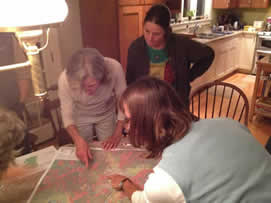
How can you work effectively with your community to develop and implement a wildlife conservation project in your town? Learn how your can get organized by following the steps below:
1. Organize Your Project Team
- Invite local boards, other local groups and area residents to an initial planning meeting to brainstorm goals and objectives for your project.
- Establish a work group of 5-7 interested volunteers to work on the project and choose a group leader.
2. Review Available Information
- Review the community's existing natural resources documents, such as natural resources inventory, conservation plan, master plan, water resources protection plan, other natural resources studies, etc.
- If you don't have a natural resource inventory (NRI), the basic building block for many subsequent actions, consider conducting one or revising an outdated NRI (see Natural Resource Inventories).
3. Develop a Plan
- Identify a project your group can feasibly accomplish within a one-year time frame.
- Define the geographic scope (a town, watershed or region).Review Community Stories to get ideas from other communities experiences with conserving wildlife and habitats.
- Review the Community Action Tools appropriate for the actions you plan to take to conserve wildlife habitats in your community.
- Develop work plan that identifies actions, a time line, and assign group members to tasks.
- If any actions need funding, develop a budget and identify potential funding sources.
- Identify local resources, e.g. conservation groups, land trusts, public support, support from local officials, funds etc.
4. Keep the Public Informed
- Inform your community about your project. Host displays at public events, run articles in local papers, keep a blog on the town website, etc.
- Public Outreach and Wildlife Habitat - Engage in education and outreach to landowners, voters and municipal officials.